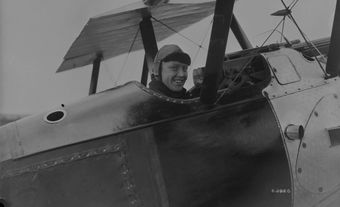
Théophile Hamel
Théophile Hamel, painter (b at Ste-Foy, LC 8 Nov 1817; d at Québec City 23 Dec 1870). Appointed official portrait painter in 1853, Hamel was referred to as the national painter by contemporary journalists, and was throughout his career one of the most popular painters with notables and clergy alike. From age 16 to 22, Hamel apprenticed with Antoine PLAMONDON in Québec C. He travelled to Europe in 1843, studying in Rome and visiting France and Belgium. He returned to Québec in 1846, and opened a studio. He moved to Montréal in 1847 for 2 1/ 2 years before establishing his permanent residence in Québec.Given the poorly developed communications of the 19th century, the upper classes used artists to make themselves known and spread their influence over either their flock (clergymen), or voters (politicians) or their social circle (professionals). Inspired by Titian, Hamel developed a style perfectly suited to the aspirations of members of the liberal professions. With Plamondon he had developed the technical mastery needed to paint faithful portraits and learned to handle daring chromatic effects, reflections and the rendition of beautiful fabrics.
Hamel refined his sober art during a stay in Italy 1843-46, studying the works of his muse, Titian. Hamel created an interesting gallery of historical figures, including Jacques Cartier, Champlain and General James Murray. He did official portraits of the Province of Canada politicians, now housed in the Parliament Buildings in Ottawa, and many other portraits of politicians in Québec C, Kingston, Montréal and Toronto. Catholic and Protestant bishops, grand vicars, priests and founders of religious communities all posed for Hamel. Several notaries, doctors and merchants had themselves painted, with their wives and children on 2 separate panels. Except for children, Hamel generally showed only one figure in a given composition.
Hamel's talent allowed him to move in a few years from a farming background to the liberal professions; his brothers could only reach the level of commerce. Hamel possessed a handsome fortune, was captain of the militia and a member of the INSTITUT CANADIEN; he regularly met with the leading personalities of the day, such as F-X. GARNEAU, P-J-O. CHAUVEAU and Octave CRÉMAZIE. His magnificent, lifelike, austere and dignified portraits helped popularize Titian's style. Hamel also taught other artists, including Napoléon BOURASSA, one of the best Canadian artists of the 19th century. Besides its artistic value, his work allows us to study a section of Canadian society in the mid-19th century. Some of the people he painted left no photographs of themselves or their families. Each portrait shows us what a member of the ruling class thought of himself and how he wished the population to view him.

 Share on Facebook
Share on Facebook Share on X
Share on X Share by Email
Share by Email Share on Google Classroom
Share on Google Classroom


